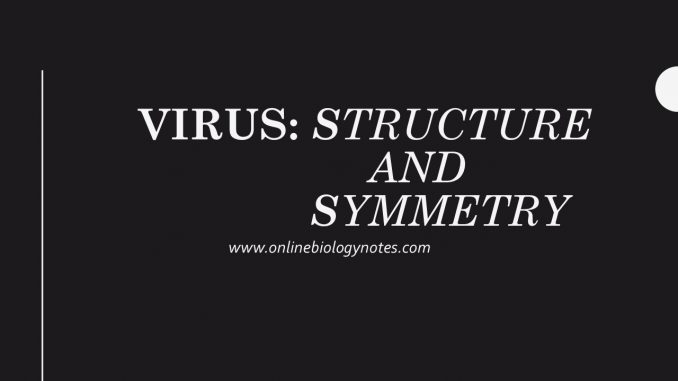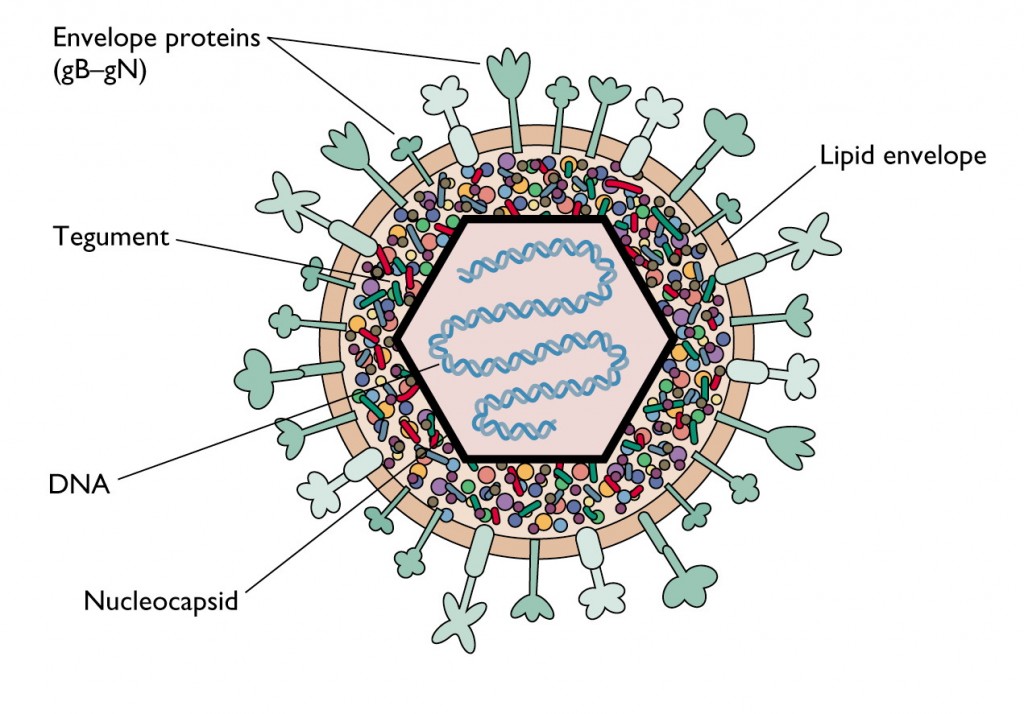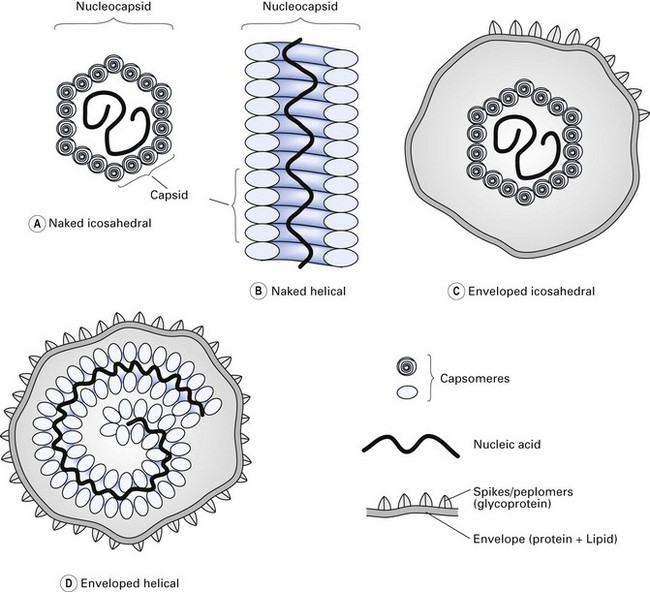
Virus: Structure and Symmetry
- Virus are very small infectious agents with size ranging from 20-300nm in diameter.
- Viruses are non-cellular entities so they are also called as particles.
- Virus lacks their own independent metabolism and cannot replicate outside the host cell. So they are also called as obligate intracellular parasites.
- Virus that infects bacteria are called bacteriophage or simply phage. Animal virus infects animals and similarly plant virus infects plants.
Structure of virus

Figure: a diagrammatic sketch of an icosahedral virus
- A basic structure of virus is nucleic acid core (either DNA or RNA but not both) surrounded by protein coat.
- Central core of nucleic acid of a virus is called genome and the protein coat surrounding is called as capsid.
- In some virus, an envelope made up of glycoprotein and phospholipid bilayer is present outside the capsid.
The basic structural components of a virus are;
1. Genome:
- Virus contains either DNA or RNA as genetic material but not both. Virus which contains DNA as genetic material are called DNA virus and those containing RNA are called RNA virus.
- Unlike other living cell where ds DNA is always a genetic material, a viral genome may consists of linear or circular ds DNA, single stranded DNA, ss linear RNA or ds linear RNA.
- Examples; Reo virus is a RNA virus which contains ds RNA genome. Parvovirus contains ss DNA, Papovavirus contains ds circular DNA as genetic materials.
2. Capsid:
- Capsid is the outer layer. Sometime it is refered as coat or shell.
- Capsid serves as impenetrable shell around the nucleic acid core.
- Capsid also helps to introduce viral genome into host cell during infection.
- The protein coat or capsid is made up of number of morphological similar sub units called capsomere. Each capsomere is further composed of protomere.
- Capsomere are arranged precisely and tightly together in a repetitive pattern to form complete capsid.
- The number of capsomere in a capsid varies from virus to virus.
- The complete complex of nucleic acid and protein coat of a virus particle is called as virus nucleo-capsid.
- Structure of capsid give the symmetry to the virus. Virus particle may be either cubicl or helical or binal or complex symmetry.
3. Envelope:
- Some virus contains envelope that surrounds nucleocapsid. The virus without envelope is called naked virus.
- The envelope is a bilayer of lipoprotein and glycoprotein.
- The envelope is acquired by the progeny virus from host cell during virus release by budding process.
- In some virus the glycoprotein projects out in the form of spike called peplomere. Some of the peplomers or glycoprotein spike such as Haemaglutinin and Neuraminidase which are involved in binding of virus to host cell.
4. Enzymes:
- Some virus contains enzymes which play central role during infection process. Eg. Some bacteriophage contains an enzyme lysozyme, which makes small hole in bacterial cell that allows viral nucleic acid to get in.
- Some virus contains their own nucleic acid polymerase which transcribe the viral genome into mRNA during replication process. Eg. Retro virus are RNA virus that replicates inside host cell as DNA intermediate. These virus possess an RNA dependent DNA polymerase called reverse transcriptase.
Symmetry of virus

- Symmetry refers to the way in which capsomere units are arranged in viral capsid.
- Two kinds of symmetry are recognized in the viruses which corresponds to two primary shape ie. Rod and spherical shape of virus.
- Rod shaped virus have helical symmetry and spherical shaped virus have icosahedral symmetry.
i. Helical (spiral) symmetry:
- The capsomere and nucleic acid are wined together to form helical or spiral tube like structure.
- Most of the helical viruses are enveloped and all are RNA viruses.
- The typical virus with helical symmetry is tobacco mosaic virus (TMV), which is a RNA virus with 2130 identical capsomeres arranged in a helix.
ii. Icosahedral (cubical) symmetry:
- An icosahedral is a polygon with 12 vertices (corner), 20 facet (sides) and 30 edges.
- Each facet is an equilateral triange.
- Icosahedral capsid is the most stable and found in human pathogenic virus eg. Adenovirus, Picornavirus, Papovavirus, herpes virus etc.
- Icosahedral capsid are of two types;
- Pentagon; Pentagonal capsomere at the vertices
- Hexagon; Hexagonal capsomere at the vertices
iii. Complex symmetry:
- Some virus are more complex, being composed of several separate capsomere with separate shape and symmetry.
- They do not have either icosahedral or helical symmetry due to complexity of their capsid structure. Eg. Pox virus, Bacteriophage.
Binal symmetry: it is a type of complex symmerty
- Some viruses such as T-phage (T2,T4 etc) have compex symmetry including head and tail
- The most complicated virus in terms of structure are some bacteriophage which possess icosahedral head and helical tail. Such structure is called binal symmetry.
